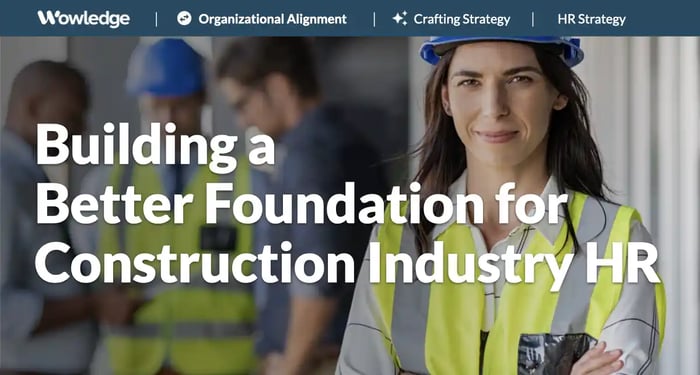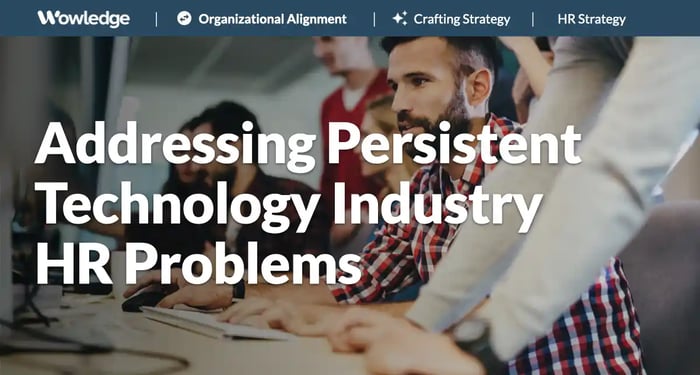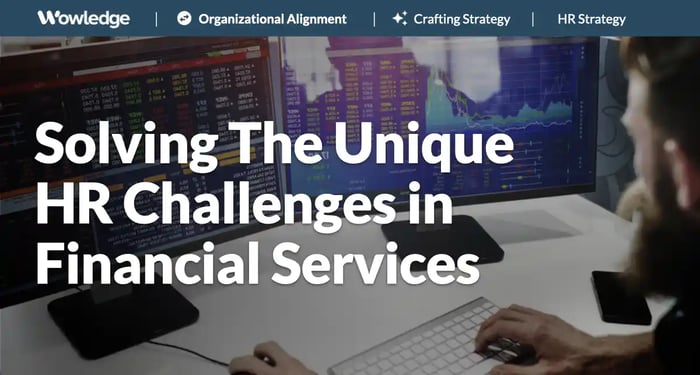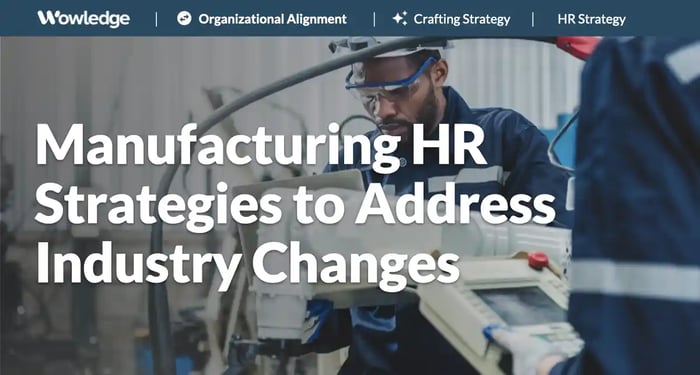Table of Contents
When considering the numerous industries that operate and drive national and regional economies worldwide, some stand out for their significant influence on the economy, others for the media attention they attract, and others have an outsized impact on many aspects of our daily lives. While the construction industry may be ranked lower on the list of industries contributing to national goods and services in total, it makes significant contributions to the quality of life of every American. Consider that housing, highways and streets, power plants and grids, and schools and businesses are engineered and built by the millions of workers employed in the industry. Given the technical and physical demands involved, the diversity of products and services generated, and the range of jobs to be performed, it should come as no surprise that the challenges faced in managing construction industry HR strategies and tactics are equally complex.
Understanding the construction industry
The industry is well known for being dominated by the building and remodeling of houses, apartment buildings, office towers, and retail centers. It is responsible for the planning, constructing, maintaining, renovating, and repairing of a wide range of buildings and critical public works. The industry is categorized into five key, but at times overlapping segments:
- Residential – housing structures (single- and multi-family), including exterior, interior, and hardscaping.
- Commercial – buildings for use in business and commercial activities, such as offices, hospitals, restaurants, retail, and hotels.
- Industrial – specialized facilities for manufacturing, processing, storing, and distributing commercial goods, such as factories, warehouses, refineries, power plants, and data centers.
- Infrastructure – public works, such as roads, bridges, utilities, dams, and power and telecommunications supply and distribution.
- Governmental – buildings for governmental bodies and public use, such as public schools, parks, libraries, hospitals, and legislative, judicial, or executive branch activities at the local, state, and federal levels.
The industry generates $2.1 trillion annually, which represents 4.5% of the U.S. gross domestic product (GDP). Interestingly, that annual revenue is produced by a vast number of businesses, with over 2.7 million companies employing millions of workers. Data from the Bureau of Labor Statistics (BLS) reports that over 65% of those employ fewer than five (5) people, and 97.1% have fewer than 50. Consider the resource challenges alone faced by the construction industry HR professionals and their proxies in all those small companies when trying to staff, pay, and retain workers to deliver on their contracts.
According to the BLS, while the industry employs 11.4 million workers in a wide range of jobs as carpenters and electricians, heavy equipment operators, boilermakers and ironworkers, elevator installers and masons, it also employs large numbers of management and business professionals, office and administration employees, and computer, engineering, and science professionals.
The median annual wage is $58,360, higher than the median yearly wage for all occupations combined ($49,500). With an average salary just below $1,000 per week, those employed in the industry enjoy a modest but living wage.
Demographically, the BLS reports that the industry is male-dominated, with 89% of its workforce comprising males. Racially and ethnically, it is dominated by 61% White and 30% Hispanic workers. The industry is also an employer of a significant number of immigrants, with recent data showing that 25.3% of the workers are foreign-born. While unionization is more common in specific geographic regions and industry segments, overall, 11.3% of workers are represented by unions. An estimated 2.3 million (23%) of construction workers are self-employed.
Business pressures faced by the construction industry
Businesses in this sector regularly face significant challenges from a range of external influences and internal capability shortcomings, creating unusually volatile and cyclical commercial environments. This makes them susceptible to business failures and closures. For example, the survival rate of new construction firms drops below 50% after five (5) years, and below 33% by year eight, and about 17% after 20 years. Construction industry HR and leadership teams should be well aware of the primary barriers to success, which include:
Economic swings
The fortunes of construction companies are particularly vulnerable to macroeconomic shifts, with fluctuations in interest rates and inflation that influence investment decisions by residential homebuyers and commercial developers.
Governmental investment and policy changes
Legislative investments and trade policy decisions drive significant shifts in the market. Legislation and policy shifts related to infrastructure enhancements (e.g., roads, dams, electrical grid) and industry investments (e.g., semiconductors, energy, manufacturing) can significantly increase or dampen the opportunities for projects related to building and upgrading physical facilities. Similarly, economic policies related to trade, tax breaks, tariffs, and immigration have a direct impact on construction costs, supply chain, and staffing.
Costs
A never-ending battle with cost management requires astute financial acumen and planning. Cost overruns, material prices, and availability, particularly for lumber, steel, and concrete, make project estimation, budget, and schedule development an enormous challenge. Smaller firms lacking the financial expertise and technologies are especially vulnerable to issues arising from project and material cost fluctuations.
Financing and cash flow
Related and continuous challenges facing companies in this sector include those related to delayed payments, collections, and challenges with lines of credit, which must be balanced against the need to pay workers and subcontractors on a regular schedule, particularly when relying on less-regular milestone payments from clients and financial sources.
Project delays
Delays due to material availability, subcontractor scheduling, staffing shortages, weather events, inspection delays, rework requirements, customer change orders, and poor project planning can stress construction projects. It is reported that 35% of companies experience significant delays, and 77% of projects fall behind schedule due to poor communication and coordination with subcontractors and individual workers.
Risk management
Perhaps due to the average size of construction companies and limited access to advanced risk assessment and contingency planning capabilities, construction firms can suffer losses and reduced profits due to risks that jeopardize their work and livelihoods. Planning and ensuring recovery and sustainability are essential for addressing issues such as environmental conditions and events, design flaws and errors, safety and equipment mishaps, theft and vandalism, as well as contractual or legal challenges. According to research by KPMG, only 27% of industry executives consider quantitative risk analysis methods and tools to be critical to their success.
Building codes and regulations
Construction standards are constantly evolving to accommodate new technologies, methods, materials, and societal expectations. Issues commonly arise with understanding and adhering to local, state, federal, and international requirements. These are designed to ensure the safety and security of those who will occupy, use, and benefit from buildings, roads, bridges, water, electricity, communications, and other related infrastructure. Challenges arise from misunderstandings, misinterpretations, and ignorance of standards, documentation, and reporting, as well as the permitting process and equipment maintenance requirements.
Technology adoption
The industry is viewed as lagging others in this space, losing opportunities to enhance project speed, accuracy, efficiency, and standards compliance with currently available modeling, simulation, materials, and design suggestions, as well as staff resourcing, scheduling, safety, and deployment. Advanced technologies such as building information modeling (BIM), 3D printing, “Internet of Things” (IoT (monitoring worker activity, safety), robots, autonomous equipment, drone surveillance, and virtual or augmented reality offer substantial opportunities for construction firms.

Construction industry HR and talent challenges
Given the range and volume of business and operational challenges that face companies in the sector, it will come as no surprise to construction industry HR leaders and professionals that the HR and talent issues they need to contend with are substantial. These companies rely on varying numbers of contractors to staff their projects, while employing a core group of project managers, superintendents, finance, and administrative staff to plan and manage their contracted work. As a result, the traditional role of HR is significantly more challenging, as policies, recruiting, payroll, training and development, and performance management often require careful handling to avoid violating regulations that define and guide the employer-employee versus contingent labor relationships. That said, however, construction industry HR teams must support their businesses comprehensively and effectively across a wide range of issues.
Labor shortages
The construction industry as a whole is facing a severe shortage of qualified workers, particularly skilled tradespeople. This shortage is exacerbated by an aging workforce and difficulties in attracting new talent. Competition for the same talent from companies in manufacturing, mining, logging, and wholesale trade, as well as those in residential repair and remodeling, leads to higher levels of turnover, recruitment issues, and salary escalation. With estimates indicating that 21% or more of total construction workers are 55 and older, and physical limitations increasing as they continue to age, career lengths are shorter for many workers.
Federal labor data tells the story best, as industry hiring rates barely cover separation rates, while hundreds of thousands of other openings continue to be listed. The transient nature of construction work, combined with the instability of seasonal work, lost time due to illness and injury, and a competitive labor market, results in high employee turnover, disrupted project timelines, budgets, and overall company reputation with developers, general contractors, and their financiers.
Worker and worksite safety
The construction industry is inherently dangerous, and maintaining a safe work environment is paramount. The risk of permanent disablement and death lurks on job sites, led by what are known as the “fatal four” (falls, being struck, electrocutions, and being pinned between materials and equipment), which result in 60% of construction-related deaths. Construction industry HR teams must ensure that policies, practices, and procedures are in place and adhered to. Project Managers, Superintendents, employees, and contractors must receive proper training on safety protocols, and these protocols are consistently implemented across all job sites. Mandating the availability and utilization of protective devices and equipment, as well as ensuring proper machinery maintenance and training, safe handling of hazardous materials, and the correct assembly, positioning, and use of ladders, scaffolding, and safety rigging, are essential examples of these requirements.
Regulatory and legal compliance
Construction projects are subject to various regulations, including safety standards, labor laws, and environmental regulations. Ensuring compliance can be complex and require a significant investment of time and resources. Consider the following list (not exhaustive) of examples that need attention, adherence, and reporting:
- OSHA (Occupational Safety and Health Administration) defines reporting, training certifications, hazardous communication standards, and personal protective equipment requirements. Requires reliable and regular reporting of work-related illnesses and injuries.
- FLSA (Fair Labor Standards Act) defines minimum wage and overtime pay standards, hourly vs. salaried employee classification standards, and mandated overtime hours and pay levels.
- Workers' Compensation is a mandatory insurance (employer-paid) policy and program that covers employees who are injured or fall ill on the job. It provides “no-fault” coverage for medical expenses, lost wages, disability payments, and rehabilitation costs regardless of who is at fault for the accident or incident. Some states have defined benefits that can increase or supplement certain federally required benefits.
- Certified Payroll is an element required in federal government-funded projects. The Davis-Bacon Act sets minimum wage and benefit levels that contractors and subcontractors must pay on federally funded projects.
- Independent contractor classification is an income taxation determination made by the Internal Revenue Service (IRS) standards to clarify who is responsible for paying employment taxes – the employing organization or the individual. The key differentiation is that employers must withhold and pay portions of their workers’ tax liabilities – withhold and deposit income, social security, and Medicare taxes for each worker who is regularly employed (plus matching employer portions). In contrast, independent contractors are responsible for paying their employment-related taxes.
- Union membership or representation is federally protected by the National Labor Relations Act (NLRA), whose regulations mandate that covered employees’ wages, benefits, workplace health and safety, job training, disciplinary, and promotion-related issues are negotiated on their behalf by their union representative. These are contractually required and must be followed by the company. The portion of the construction workforce that is unionized was recently reported to be 10.7%.
A myriad of state and local regulations must be understood and adhered to, as well as those in other countries and regions outside the United States.
Escalating worker pay
High labor demand, combined with low availability, drives a highly competitive pay environment. While a shortage of skilled laborers and tradespeople naturally has led to higher pay rates being sought (and offered), the challenge is greater in specific regions and circumstances. Higher wages are reported in the northern and coastal states, which is partly due to higher unionization (where represented workers enjoy a 17.5% premium over their non-unionized peers) and partly due to shorter working seasons and harsher weather conditions. Faster wage growth is occurring in specific roles based solely on skill demands, including tradespeople and many of their helpers (such as electricians, masons, elevator and escalator installers, roofers, and paper hangers).
Emerging technologies require experts
The construction industry, while lagging others in the adoption of advanced methods and technologies, is increasingly competing for STEM expertise in the same fields (science, technology, engineering, and math) as so many others. According to Deloitte, there is a rising demand for predictive analytics to model and plan for material shortages, optimize purchasing of raw materials and components, manage semi-autonomous machines (for masonry and framing), using AI for project planning and estimating, programming 3D printing for building materials, and using AI-driven site monitoring for security, safety, and productivity monitoring.

Priority solutions for construction industry HR leaders
Given the range of business and talent challenges facing industry HR teams daily, and commonly limited resources, the real challenge is to take the time to carefully consider how to help best drive the achievement of business objectives by prioritizing how to focus their resources and efforts. Some key opportunities to consider for making such an impact include:
1. Create a strategic HR plan that addresses primary business goals
Construction industry HR teams in small to mid-sized businesses often fail to analyze their needs and set goals that are directly linked to specific business issues, directions, and plans. Creating one on an annual, if not on a continuous (and agile) basis, will establish the team as a differentiating force that can support a competitive advantage for the company in the marketplace. Focus on creating a flexible, agile, and responsive plan that addresses the key drivers of business success. As part of this, consider a talent strategy that addresses how jobs will be filled in a tight market, including the use of contractors, promotions, transfers, employee training and development, and critical skill job holder retention.
2. Build relationships with PEO and recruiting firms
Consider how to deliver a range of services with limited budgets and resources by outsourcing payroll, benefits, onboarding, compliance, employee relations, compensation, workers’ compensation, and regulatory compliance. Professional Employer Organizations (PEO) co-employ and share responsibility for employees, and can provide access to attractive employee benefits that might be unattainable or too expensive otherwise. Companies such as Leap29, Insperity, ADP TotalSource, Paychex, TriNet, Justworks, and Amplify offer services to small to medium-sized construction firms, making them worth reviewing for their suitability.
At the same time, a combination of outsourcing recruitment and utilizing online talent hiring platforms can accelerate the location, screening, and presentation of candidates for open jobs, both for employment and contract work in professional and trade roles. Review the offerings and coverage that Aerotek, PeopleReady, LaborWorx, BlueRecruit, WayUp, SkilledTradespartners, bluecollarrecruiter, skillwork, Trade Hounds, InstaWork, and Workrise offer.
3. Attract and recruit creatively
The use of innovative methods that appeal to and attract targeted workers appears to be underutilized in the construction industry. Consider the use of social media, which is reported to be the second-largest driver of younger, early-career workers (e.g., Gen Z) who are considering a career in the skilled trades. Research the industries that are laying off at high rates and actively recruit from sectors and job families that are losing security and are more likely to seek longer-term prospects. Construction industry HR professionals can open the doors to larger talent pools by seeking more diverse candidates who are increasingly interested in hands-on careers.
Utilize apprenticeship programs to take advantage of the rapid growth in younger people interested in the trades and create a competitive advantage, where only a handful of the largest industry employers rely upon them. Actively engage with local high schools, colleges, vocational & technical programs to update curricula, train, and offer after-school and summer hire programs to build skills and prepare future employees.
4. Leverage demographic shifts in career interest
Interestingly, the youngest generation of workers is flocking to careers in the trades, including those who have abandoned their post-college career dreams. Currently, 42% of Gen-Z workers are in the trades, with 34% holding a college degree. The reasons? 30% say it is due to better long-term career prospects, 19% could not find a job in their field of study, 16% did not earn enough money, and 16% said their degree didn’t lead to the career they expected.
Construction industry HR leaders should take note. The attractions of a construction career appeal to those who report wanting more flexibility and independence, prefer hands-on work, want to earn a living wage sooner, want more job security, avoid suffocating student debt loads, and reduce the risk of being replaced by AI technologies. Use these in job postings, career marketing promotions, job interviews, and employee communications to enhance the employment brand and value proposition.
5. Create a culture of safety
Work with business leaders to articulate and communicate the criticality, business value, and personal benefits of performing safe and careful construction work. Take care to avoid messaging and training that is overbearing, and build it into the daily workflow. Ensure that the training and communications are tailored to address employees, contractor teams, individual subcontractors, and day laborers alike. Consider 10-minute team “start-up sessions” before each workday at each worksite, with the day's work plans, progress to be made, and safety reminders integrated. Create (cash and prizes) incentives and “games” to engage everyone, and develop accident response teams and playbooks that raise the stakes and establish a robust foundation for worker ownership.
Relevant Practices & Tools
Core HR Strategy Practices to Define a Foundational Direction for the HR Function. >
An HR Strategy sets business-based human resource (HR) tactics that will constitute a comprehensive multi-year approach to managing the HR function's structure, governance, programs, policies, and practices... more »
Developing a Winning Talent Strategy to Identify Key Capabilities and the Most Appropriate Workforce Mix. >
A talent strategy defines the talent needs and associated objectives necessary to meet top business goals. It is both an integral part of the HR strategic plan and a direct informer of the talent management strategy and planning process... more »
Preparing to Widen the Candidate Talent Pool to Increase Diversity of Thought, Background, and Experience. >
Widening the talent pool enables organizations to change the composition of their workforce and unlock the power of increased diversity of thought, background, and experience... more »
Building Long-term Relationships with Strategic Talent Sources. >
While there are thousands of external talent sourcing channels and others that can be deployed internally, not all of the sources are productive for the organization... more »
The Critical Talent Plan Summary Tool: Generate Estimates for Each Workforce Plan Mitigation Strategy to Manage Future Critical Roles. >
A format for guiding and recording the planning of both employee volumes and strategic actions to be taken to close talent gaps projected to occur in the future population of critical role workers for workforce planning uses... more »










